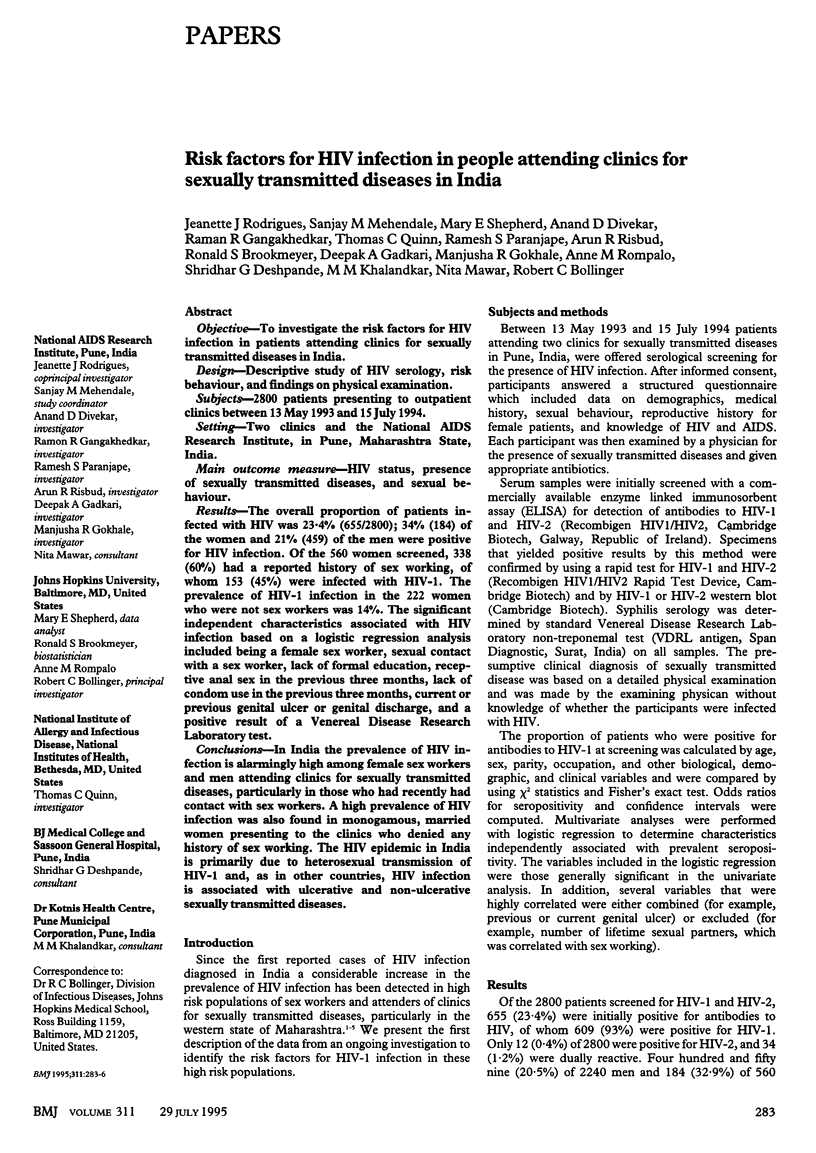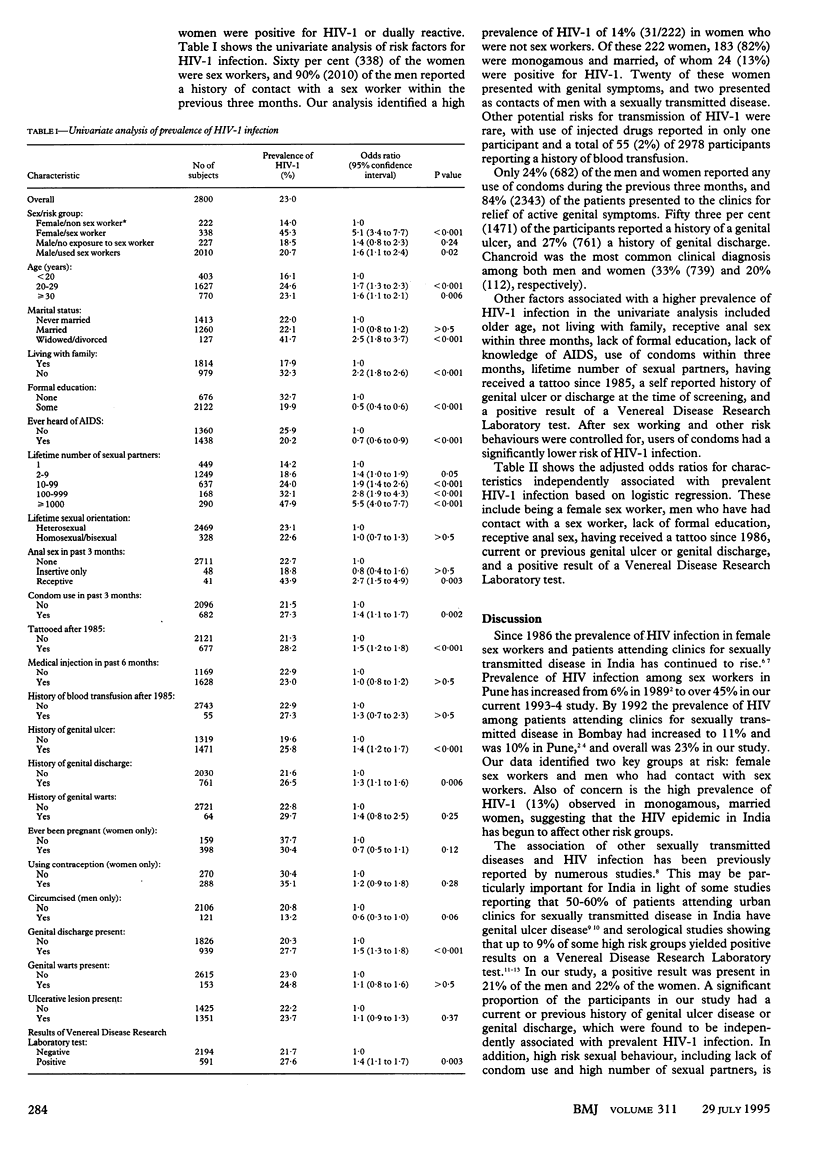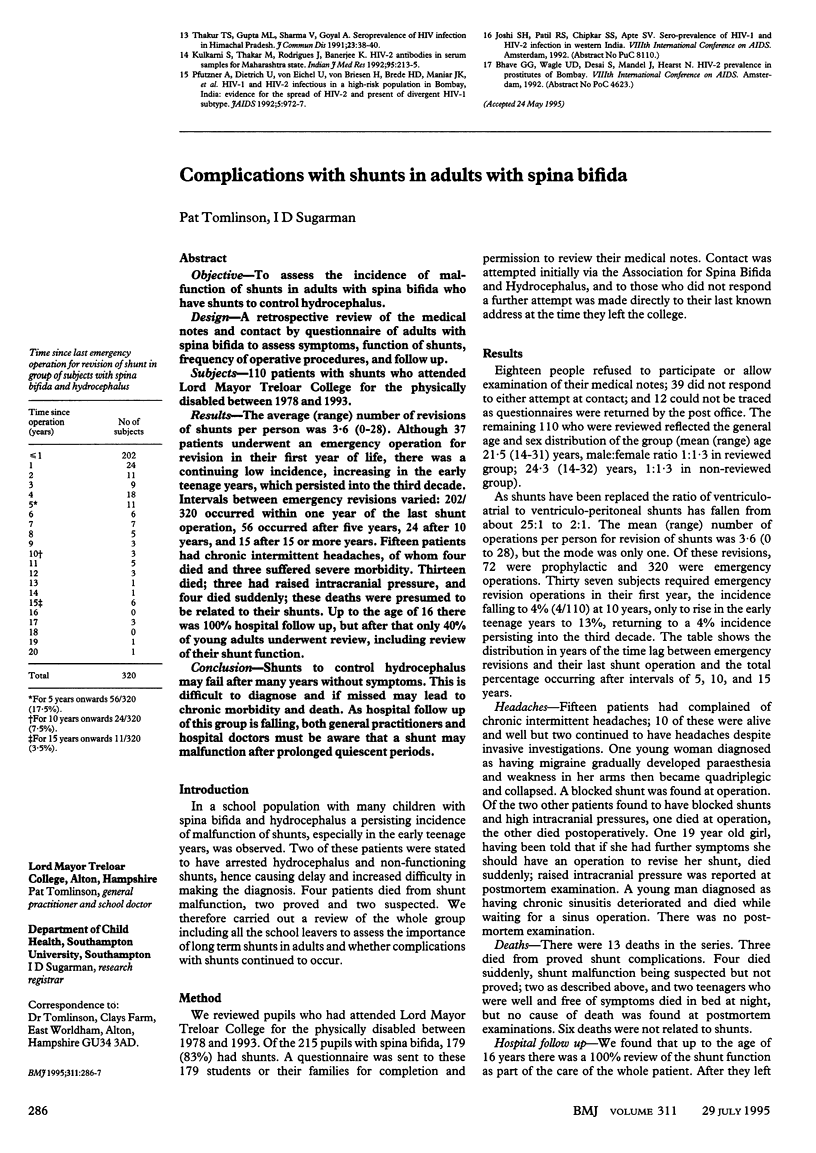Abstract
OBJECTIVE--To investigate the risk factors for HIV infection in patients attending clinics for sexually transmitted diseases in India. DESIGN--Descriptive study of HIV serology, risk behaviour, and findings on physical examination. SUBJECTS--2800 patients presenting to outpatient clinics between 13 May 1993 and 15 July 1994. SETTING--Two clinics and the National AIDS Research Institute, in Pune, Maharashtra State, India. MAIN OUTCOME MEASURE--HIV status, presence of sexually transmitted diseases, and sexual behaviour. RESULTS--The overall proportion of patients infected with HIV was 23.4% (655/2800); 34% (184) of the women and 21% (459) of the men were positive for HIV infection. Of the 560 women screened, 338 (60%) had a reported history of sex working, of whom 153 (45%) were infected with HIV-1. The prevalence of HIV-1 infection in the 222 women who were not sex workers was 14%. The significant independent characteristics associated with HIV infection based on a logistic regression analysis included being a female sex worker, sexual contact with a sex worker, lack of formal education, receptive anal sex in the previous three months, lack of condom use in the previous three months, current or previous genital ulcer or genital discharge, and a positive result of a Venereal Disease Research Laboratory test. CONCLUSIONS--In India the prevalence of HIV infection is alarmingly high among female sex workers and men attending clinics for sexually transmitted diseases, particularly in those who had recently had contact with sex workers. A high prevalence of HIV infection was also found in monogamous, married women presenting to the clinics who denied any history of sex working. The HIV epidemic in India is primarily due to heterosexual transmission of HIV-1 and, as in other countries, HIV infection is associated with ulcerative and non-ulcerative sexually transmitted diseases.
Full text
PDF



Selected References
These references are in PubMed. This may not be the complete list of references from this article.
- Bollinger R. C., Tripathy S. P., Quinn T. C. The human immunodeficiency virus epidemic in India. Current magnitude and future projections. Medicine (Baltimore) 1995 Mar;74(2):97–106. doi: 10.1097/00005792-199503000-00005. [DOI] [PubMed] [Google Scholar]
- Jain M. K., John T. J., Keusch G. T. A review of human immunodeficiency virus infection in India. J Acquir Immune Defic Syndr. 1994 Nov;7(11):1185–1194. [PubMed] [Google Scholar]
- Kulkarni S., Thakar M., Rodrigues J., Banerjee K. HIV-2 antibodies in serum samples from Maharashtra state. Indian J Med Res. 1992 Sep;95:213–215. [PubMed] [Google Scholar]
- Kumar B., Rajagopalan M., Sehgal S., Sharma M., Malhotra S. Syphilis serology and human immunodeficiency virus positivity in Chandigarh. Int J STD AIDS. 1990 Nov;1(6):438–439. doi: 10.1177/095646249000100610. [DOI] [PubMed] [Google Scholar]
- Pfützner A., Dietrich U., von Eichel U., von Briesen H., Brede H. D., Maniar J. K., Rübsamen-Waigmann H. HIV-1 and HIV-2 infections in a high-risk population in Bombay, India: evidence for the spread of HIV-2 and presence of a divergent HIV-1 subtype. J Acquir Immune Defic Syndr. 1992 Oct;5(10):972–977. [PubMed] [Google Scholar]
- Simoes E. A., Babu P. G., John T. J., Nirmala S., Solomon S., Lakshminarayana C. S., Quinn T. C. Evidence for HTLV-III infection in prostitutes in Tamil Nadu (India). Indian J Med Res. 1987 Apr;85:335–338. [PubMed] [Google Scholar]
- Thakur T. S., Gupta M. L., Sharma V., Goyal A. Seroprevalence of HIV infection in Himachal Pradesh. J Commun Dis. 1991 Mar;23(1):38–40. [PubMed] [Google Scholar]
- Thakur T. S., Sharma V., Goyal A., Gupta M. L. Seroprevalence of HIV antibodies, Australia antigen and VDRL reactivity in Himachal Pradesh. Indian J Med Sci. 1991 Dec;45(12):332–335. [PubMed] [Google Scholar]
- Wasserheit J. N. Epidemiological synergy. Interrelationships between human immunodeficiency virus infection and other sexually transmitted diseases. Sex Transm Dis. 1992 Mar-Apr;19(2):61–77. [PubMed] [Google Scholar]


